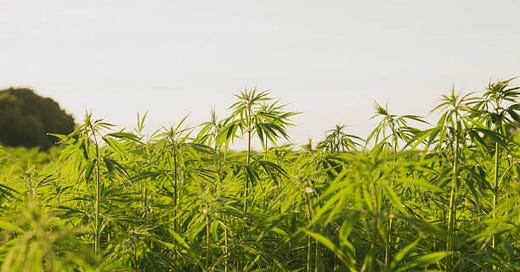Protect Your Home from Floods, Fires, and Heat Waves With Hempcrete
A Look Into the Performance Benefits of Hempcrete for our Rapidly Changing Environment, and How it can Help to Mitigate the Damage Already Done.
It’s getting harder and harder to ignore the ever-increasing amount of extreme weather happening on a global scale. In the US, it seems like every year we are having “hundred year storms” and record breaking wildfires, in addition to the fact that the global average temperature has been rapidly increasing since the late ‘70s. However, hope is not lost. Hempcrete buildings can survive floods, fires, and keep the indoor temperature comfortable through bouts of extreme heat and cold, all while having the ability to be an actual carbon sink!
Floods
A hempcrete home seems to be the best choice for homes in areas prone to flooding. This is because a hempcrete wall is able to be exposed to water periodically without the risk of rotting or becoming moldy. This is a great article by HempBuild Magazine, where you get a firsthand look into a hemp home that did flood, the reason they built with hempcrete, and how the walls reacted.

Fires
Another tremendous benefit to building with hempcrete is its ability to withstand fire. Fire testing is still ongoing with hempcrete as a building material, but the results are very promising. In Australia recently, a maker of hempcrete blocks had to abandon the area where his business was because of how severe the fires were. When he returned, he found his hempcrete blocks mostly unharmed, stating "The pallets have burned but the blocks themselves did not, which is a great story for us." You can read more about that here. Although I don’t know of a built hempcrete home that has been subjected to an actual wildfire, I strongly believe that if you had a hemp home, and were to shutter your windows and doors with hempcrete panels, or another fireproof material, your home would be relatively untouched, and definitely still standing.

Heatwaves and Cold Snaps
Hempcrete also helps to keep your indoor environment comfortable, no matter what the temperature is like outside. The utilities needed with a hempcrete house is only a fraction of what is used to keep conventional buildings within the same temperature range. That is because it is insulative as well as being a thermal mass, so the building will retain the desired temperature more effectively than relying on insulation alone, and can warm up and cool down quicker than other buildings constructed with thermal mass only materials like stone and concrete.
Environmental Benefits
A home constructed with hempcrete is not only less polluting than using more conventional, energy intensive materials. If done properly, it actually has a net negative carbon footprint. Through a combination of the high photosynthesis rate of the hemp plant, along with using hydrated lime, which absorbs CO2 when exposed to water, you lock away more carbon than it takes to create this wall system. You can read more about that in this article On the Theoretical Carbon Storage and Carbon Sequestration Potential of Hempcrete.
Taking all of this into consideration, as a builder, I strongly believe that utilizing hempcrete as a building material has multiple immediate benefits for the homeowner, and if it can be implemented on a large scale, will be environmentally beneficial as well.
While hemp holds promise worldwide, if you’re in Michigan and curious about how it can be used in construction, I’d love to help you explore its potential for your next build or remodel. Additionally, if you’re an investor looking to support the development of sustainable, hemp-based, prefabricated structures, I’m actively seeking partners to help expand this vision.
Feel free to reach out to me at Donald@SuperNaturalStructures.com for a consultation, or to discuss investment opportunities.
Thanks for reading,
-Donald Samulski





